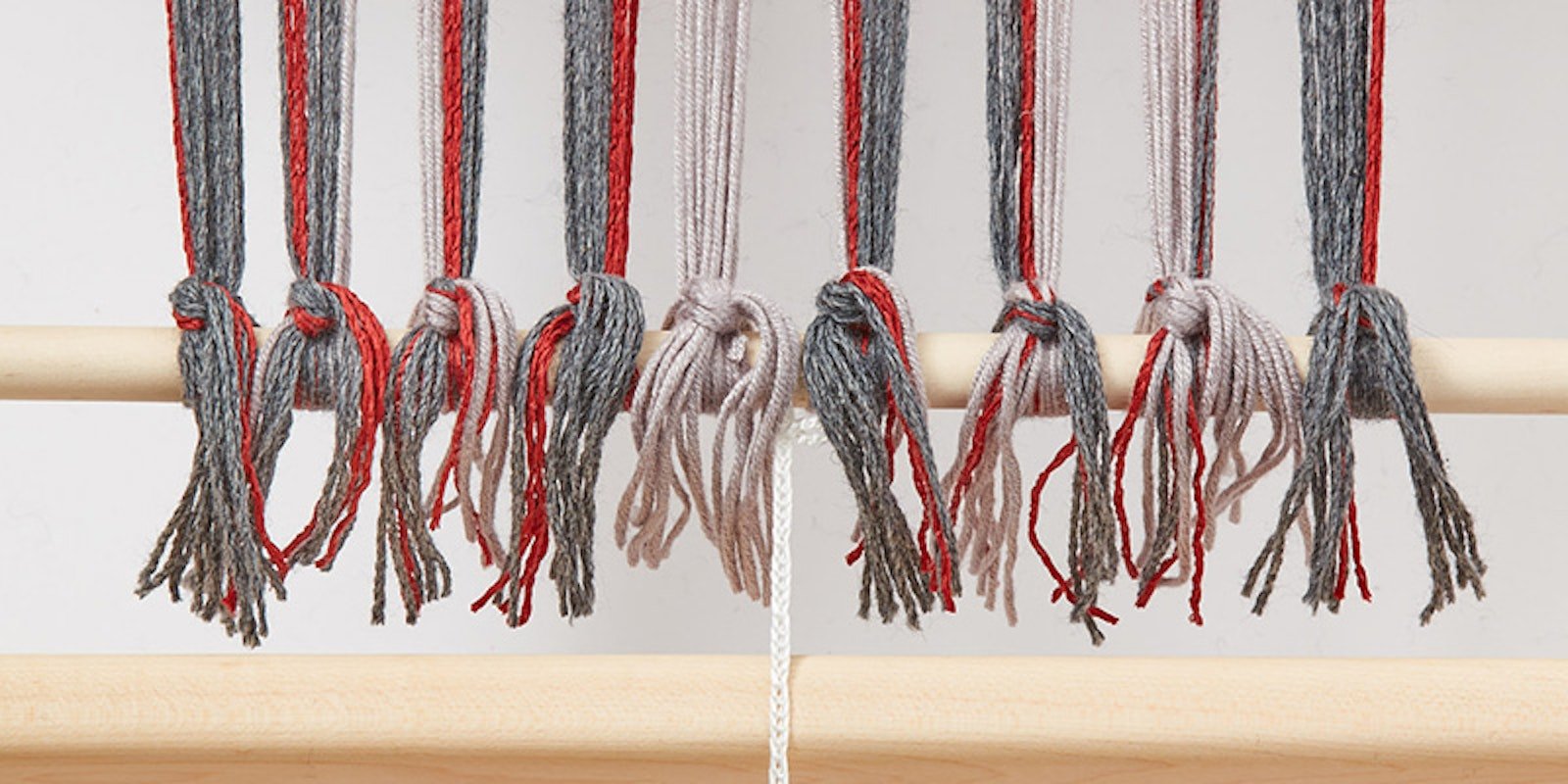Whether you weave on a multishaft loom or a rigid-heddle loom, you need to have some way of fastening your warp to the cloth beam. If you warp your loom from the back or the front, the last step before throwing your first pick is attaching your warp ends to the front apron rod.
Probably the most common way is tying onto the apron rod using lark’s head knots, adjusting tension, and then tying a square knot to secure the lark’s head knot. After you have wound your warp onto the warp beam in the back and sleyed it through the reed or rigid heddle, follow these steps to tie onto the front apron rod.
Positioning the apron rod and warp
Secure the apron rod in front of the loom’s front beam with 3 or 4 inches of space between the apron rod and the front beam.
Pull your warp out straight across the apron rod. At a minimum, you will need about 3 inches of warp to tie your knots. If you are weaving a scarf, add a few inches if you want long fringe. Remember that you will be weaving a header, which will also give you an inch or so to use for fringe. If your warp extends too far past the apron bar, wind it back until it is at the correct spot. If it is too short, release some warp from the cloth beam. I find it is easier to work if all of my ends are about the same length, so I trim any long ends at this point.
ADVERTISEMENT
Tying lark’s head knots
When tying onto the apron bar, I recommend ½-–1-inch bouts. Larger bouts are difficult to tension and require wider headers to even out the warp ends when you start weaving. I also recommend that all of the bouts have roughly the same numbers of ends. For harness looms, all ends in the same dent should be kept together in a bout to avoid putting pressure on any individual thread. Use even numbers of ends in your bouts for ease in dividing them.
Step 1. Divide bout in half. Photo credit: George Boe
- Starting on either side of your warp, pull a bout of ends over the apron rod. Divide it in half. Take one half around the apron rod to the right of the bout and the other half around the apron rod to the left of the bout.
- Bring the two halves together at the top of the rod and tie an overhand knot. This completes one lark’s head knot.
- Continue to tie lark’s head knots across the warp going back and forth between sides until all of the ends are contained.
- Starting in the middle, pull the two ends on each lark’s head knot until the warp is moderately tight, applying the same tension to each knot. I find it is best for me if I do this in one sitting in a very methodical way. Work toward one edge for a couple of knots and then go back to the middle and work toward the other edge for a couple of knots.
- Crank your warp back slightly to tension it a bit more. Close your eyes and run your fingers across the warp feeling for any soft or hard places. If you find any, undo the lark’s head knot and retension those ends. Check again for soft and hard places, and adjust as needed.
- After all of the knots have been tensioned once, repeat the process, but this time secure the lark’s head knot with a square knot. Check your tension again, and retie any knots that need adjustments.
Step 2. Tie overhands knots using the two halves of each bout. Photo credit: George Boe
Tensioning and tying square knots
Step 6: Secure the lark’s head knots with square knots. Photo Credit: George Boe
You are now ready to weave your header.
Weave well,
Susan




